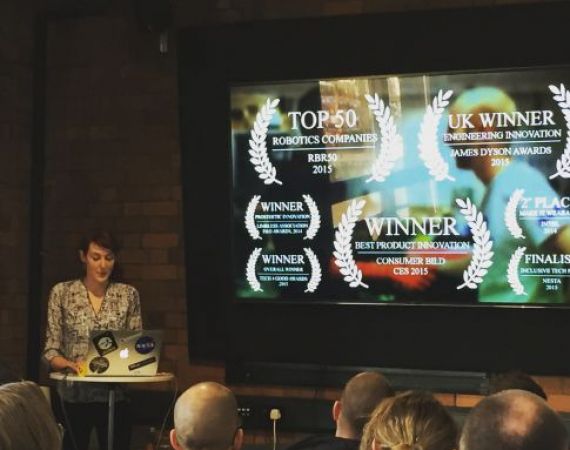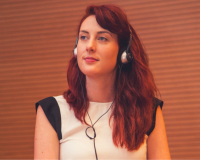Lunchtime talk write-up
Posted on Fri 5 Feb 2016
The Maker movement, 3D printing, and bionic hands
There are 11 million amputees around the world and the number is rising. Open Bionics is a robotics company with a big mission: to create accessible, affordable robotic assisted tech for people affected by mobility issues.

Sammy Payne
Speaker

Samantha Payne
Samantha is the co founder of Open Bionics, an award-winning startup 3D printing robotic hands for amputees that look and feel good. Open Bionics has won multiple awards for engineering and innovation, including the James Dyson award. Sammy is interested in startups, robotics, wearables, smart…There are 11 million amputees around the world and that number is rising. Open Bionics is a small robotics company founded in 2014, with a big mission: to create accessible and affordable robotic assisted technologies for people who are affected by mobility issues. Studio resident and Open Bionics co-founder Sammy Payne joined us on Friday 29 February to talk about their journey so far. Here are five things I learned:
1. 96% of amputees would like a bionic hand, and believe it would vastly improve their quality of life, aiding them with everyday tasks and impacting on day-to-day life. However, bionic hands are not readily available to the vast majority, because they can be heavy and cumbersome to wear and cost on average £60,000.
2. Open Bionics has taken the same technology as current leading bionic hands, changed the material, 3D printed it and repackaged it. This makes the product much more affordable, quicker to make and approximately half the weight. The process involves 3D scanning the customer’s socket to create a 3D mesh, which is then converted into a custom-fitted 3D model. This whole process only takes 2 days.
3. Open Bionics’ developments and programme code are all open sourced. Sammy identified a two-fold benefit to this approach; firstly amputees have all the tools necessary to 3D print their own bionic hand. Secondly, the users can share their own developments with Open Bionics, for example one amputee has built his own hand and then shared designs for a wrist. This process of co-development and collaboration with the end-user and maker communities is at the core of Open Bionics business model.
4. Sammy ran a workshop in the Studio to explore what children’s experiences are with prosthetic hands. The short answer is, the vast majority don’t wear them. Children can feel alienated by cosmetic hands, or hooks and often report experiences of bullying at school. Open Bionics began to research how they could begin to challenge this stigma. In residence on a Disney accelerator programme, Open Bionics designed superhero hands that can offer children far more functionality, a lightweight prosthetic, encourage their unused muscles to regrow and an opportunity to view their differences as an opportunity rather than a limit.
5. So far, Open Bionics has designed and created Iron Man, Frozen and Star Wars bionic hands for children in partnership with Disney. These are the smallest bionic hands ever made. The next step is to bring 30 new designs of bionic hands to the market over the next couple of years.
Sammy invited the audience to join the Open Bionics developer community where makers can download instructions and 3D files to create an Open Bionics robotic hand. http://www.openbionics.com/developer/